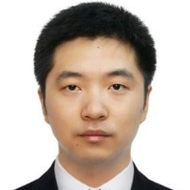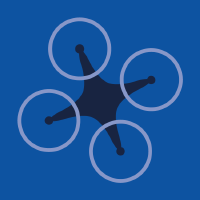Topic Editors



Advanced Array Signal Processing for B5G/6G: Models, Algorithms, and Applications
Topic Information
Dear Colleagues,
The advent of the next-generation wireless communication systems, called B5G or 6G, presents exciting opportunities for various fields. Array processing techniques play a vital role in enhancing the performance of wireless communication systems, including signal detection, interference cancellation, beamforming, and localization, among others. However, array signal processing faces various challenges that need to be addressed to fully harness the potential of emerging technologies. These challenges arise due to the evolving nature of wireless networks, higher data rates, increased device density, and the demand for seamless connectivity. Typical challenges include interference management, massive MIMO, non-stationary environments, energy efficiency, spatial resolution and localization, computational complexity, security and privacy, etc.
This topic is intended to solicit high-quality contributions in array signal processing for the next-generation wireless communication systems. Authors are invited to submit original papers presenting new theoretical and/or application-oriented research including models, algorithms, and applications. In addition, review papers on this topic are also welcome. Interesting topics include, but are not limited to:
- Adaptive beamforming for wireless communication systems;
- MIMO (Multiple-Input Multiple-Output) signal processing;
- Massive MIMO and millimeter-wave communications;
- Direction-of-arrival estimation techniques;
- Array processing for interference cancellation;
- Sparse signal processing in array systems;
- Machine learning and deep learning techniques for array signal processing;
- Channel estimation and equalization in wireless communications;
- Array signal processing for IoT (Internet of Things) networks;
- Antenna array design and implementation for wireless systems;
- Cognitive radio and spectrum sensing techniques;
- Array signal processing for vehicular and drone communications;
- Localization and tracking in wireless networks;
- Signal processing for wireless sensor networks.
Dr. Fangqing Wen
Prof. Dr. Xianpeng Wang
Dr. Jin He
Dr. Liangtian Wan
Dr. Zhiyuan Zha
Topic Editors
Keywords
- array signal processing
- B5G/6G
- massive MIMO
- machine learning
- wireless communications
Participating Journals
| Journal Name | Impact Factor | CiteScore | Launched Year | First Decision (median) | APC | |
|---|---|---|---|---|---|---|

Drones
|
4.8 | 6.1 | 2017 | 17.9 Days | CHF 2600 | Submit |

Electronics
|
2.9 | 4.7 | 2012 | 15.6 Days | CHF 2400 | Submit |

Remote Sensing
|
5.0 | 7.9 | 2009 | 23 Days | CHF 2700 | Submit |

Sensors
|
3.9 | 6.8 | 2001 | 17 Days | CHF 2600 | Submit |

Smart Cities
|
6.4 | 8.5 | 2018 | 20.2 Days | CHF 2000 | Submit |

MDPI Topics is cooperating with Preprints.org and has built a direct connection between MDPI journals and Preprints.org. Authors are encouraged to enjoy the benefits by posting a preprint at Preprints.org prior to publication:
- Immediately share your ideas ahead of publication and establish your research priority;
- Protect your idea from being stolen with this time-stamped preprint article;
- Enhance the exposure and impact of your research;
- Receive feedback from your peers in advance;
- Have it indexed in Web of Science (Preprint Citation Index), Google Scholar, Crossref, SHARE, PrePubMed, Scilit and Europe PMC.



